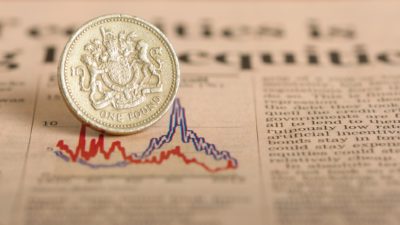Earning passive income by investing in dividend shares isn’t always straightforward. Even the most obvious and well-known companies can be more complicated than they initially appear.
Coca-Cola‘s (NYSE:KO) a good example. It looks like a simple business at first sight, but there’s a lot bubbling beneath the surface that I think investors should be interested in.
Coca-Cola
As a lot of investors know, there are Coca-Cola stocks listed on various exchanges. In the UK, there’s Coca-Cola HBC (LSE:CCH) and Coca-Cola Europacific Partners (LSE:CCEP).
Should you invest £1,000 in British Land Plc right now?
When investing expert Mark Rogers has a stock tip, it can pay to listen. After all, the flagship Motley Fool Share Advisor newsletter he has run for nearly a decade has provided thousands of paying members with top stock recommendations from the UK and US markets. And right now, Mark thinks there are 6 standout stocks that investors should consider buying. Want to see if British Land Plc made the list?
These are franchise companies that produce the Coca-Cola drinks in various countries. This includes Coca-Cola, but also includes products like Costa, Glacéau Smartwater, and Powerade.
The franchisees look after the manufacturing and distribution, leaving the core business with two jobs. The first is developing the brand portfolio and the second is producing concentrates.
This gives the overall system the benefits of global scale and local knowledge. But which parts of the organisation are most interesting from an investment perspective?
The bottlers
At first sight, the bottling franchises look promising. They trade at reasonable price-to-earnings (P/E) multiples and have generated solid earnings growth over the last decade.
For example, shares in Coca-Cola Europacific Partners trade at a P/E multiple of 18 and net income has grown 11% a year since 2014. And Coca-Cola HBC isn’t far behind.
This is very positive, but manufacturing takes a lot of machinery that needs to be maintained. And cash that has to be reinvested in equipment can’t be distributed to shareholders.
That’s why the low P/E multiple doesn’t translate into a high dividend yield. With the central US company however, things are quite different.
The central business
By contrast, the central Coca-Cola company looks like it barely grows – since 2014, earnings per share have increased by an average of 4.4% a year. But a closer look reveals a different story.
Since 2000, the firm has refranchised several of its bottling operations to restructure contracts. This has cut into profits, but the results are starting to show up in the company’s financials.
Over the last five years, earnings have been growing at 10% a year. And with less in the way of equipment to maintain, I expect strong returns on invested capital to continue going forward.
A closer attention to unhealthy food and drinks in the US is a potential risk. And that will be the real test for the strength of the Coca-Cola brand over the next few years.
Passive income
I know my colleague Ben McPoland likes Coca-Cola HBC. And his views on this subject (and other investment topics) are ones I think are worth taking seriously.
It would however, be boring if we all agreed all the time. And I’m not going to invoke billionaire investor Warren Buffett to make my case, but I prefer the US-listed company from an investment perspective.
I think the effects of the firm’s restructuring are starting to materialise. And I expect the firm to be a strong passive income investment for decades to come.
Maybe there’s room for both in a portfolio. But for the time being, the one I’m considering buying for my Stocks and Shares ISA is the one Berkshire Hathaway has owned since 1994.








